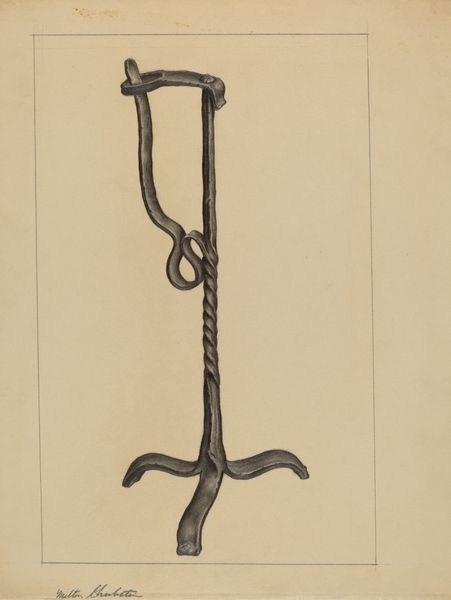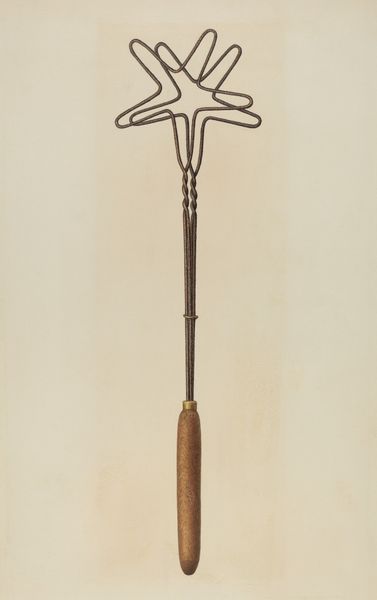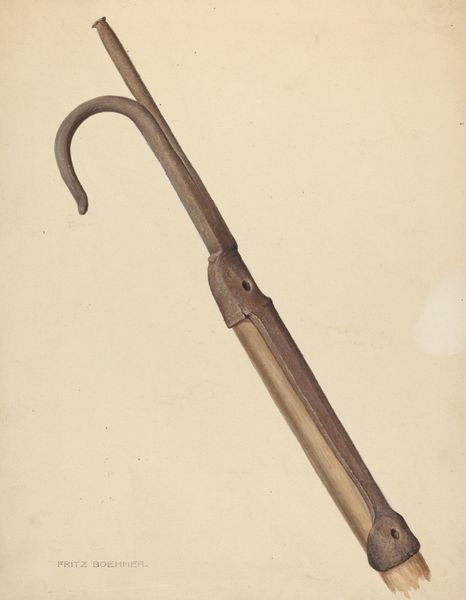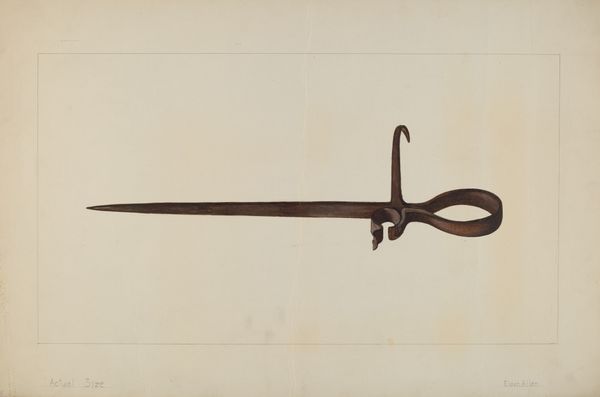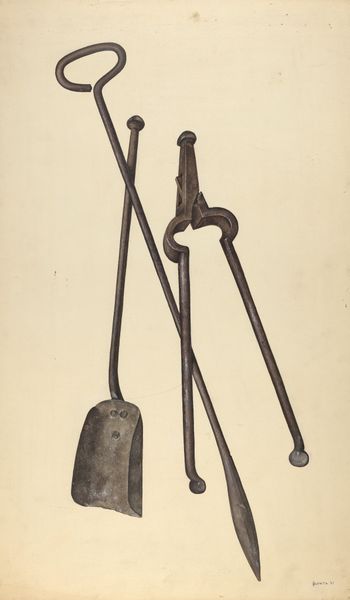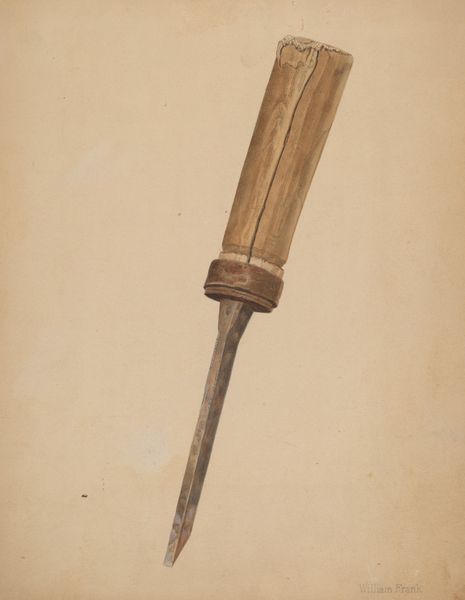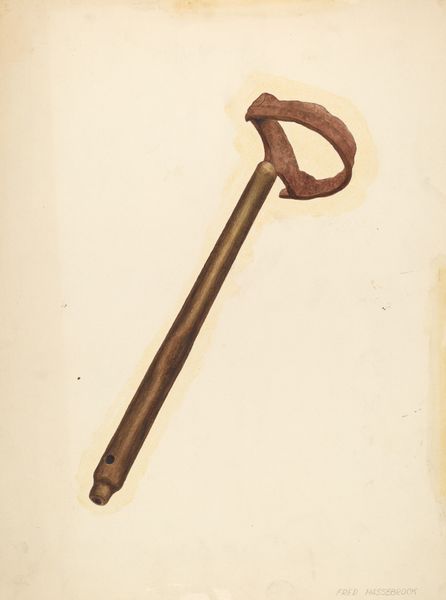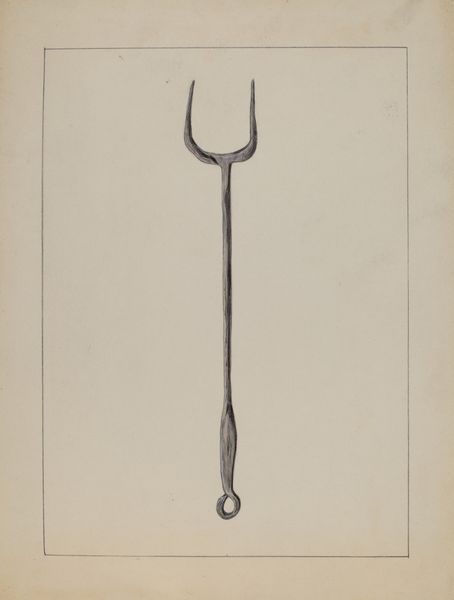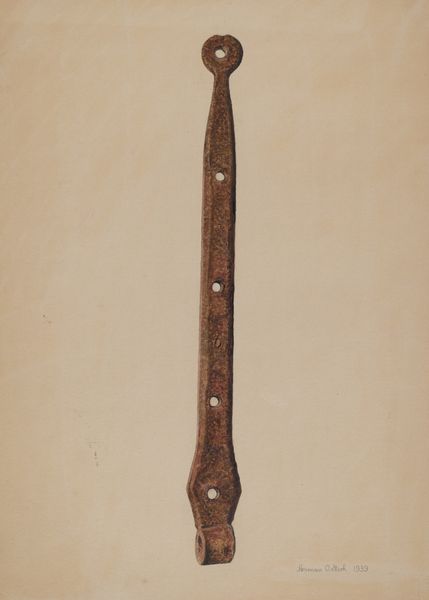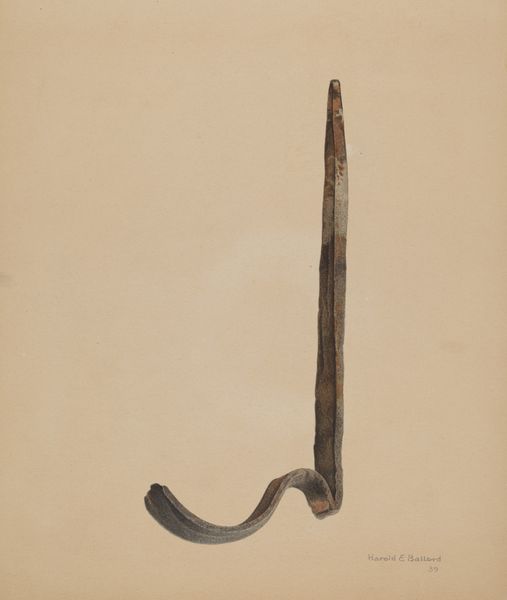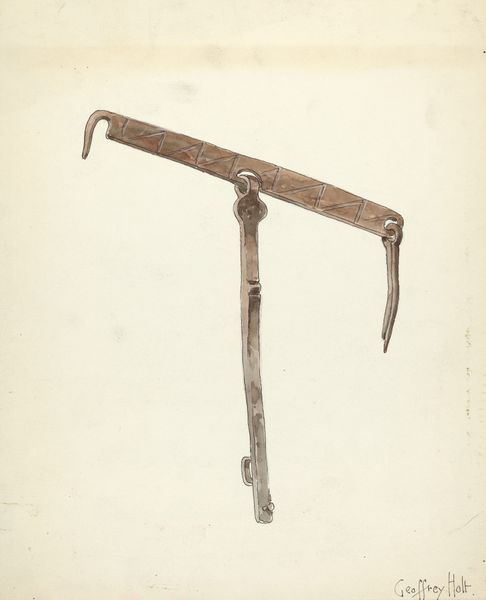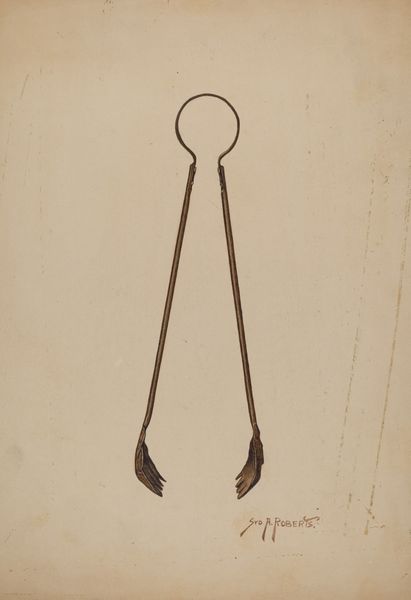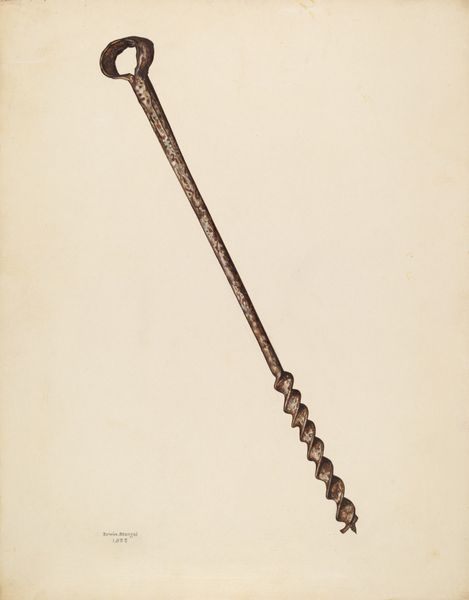
drawing, watercolor
#
drawing
#
watercolor
#
watercolour illustration
Dimensions: overall: 35.5 x 28 cm (14 x 11 in.) Original IAD Object: 26" long; inside arc of tongs: 1 1/2" radius; handles: 22" long
Copyright: National Gallery of Art: CC0 1.0
Curator: Orison Daeda's watercolor and drawing titled "Blacksmith's Tongs," created around 1942, presents a stark image. What is your initial reaction to it? Editor: I'm struck by the austerity of the image. The severe angles and the cold, almost sterile presentation create a mechanical mood. Curator: Daeda's meticulous detail in capturing the texture of the metal invites a deeper look at its form and structure. It prompts thoughts about function versus pure form. Editor: This also speaks volumes about labor history, specifically during World War II, doesn't it? Consider the propaganda focusing on industry. This drawing becomes symbolic—representative of America's industrious push during war. The tongs, while functional, become idealized objects almost on par with classical sculpture. Curator: I see your point about the social context influencing its creation and reception. However, what fascinates me are the compositional choices. Notice how Daeda uses diagonals to create dynamism within the seemingly static image. Editor: Absolutely. But the artist had to be deliberate, knowing the viewer might associate images with labor and home-front determination. It challenges the viewer to celebrate production—to find elegance and artistry in everyday objects. Curator: And think about the implications in terms of class. Blacksmith’s tongs – utilitarian and quotidian, are not necessarily an elegant symbol. Deada elevating it through his composition seems almost like he’s questioning these notions. Editor: It also encourages us to consider the broader function of art. Does it simply reflect the times, or does it challenge assumptions inherent in those historical conditions? Curator: The deliberate placement and use of light suggest careful consideration of not just representation, but almost an idolization of labor in service to war, wouldn’t you agree? Editor: Indeed. I think Daeda, through careful study and detail, immortalized a crucial component of the war machine, but I’m also still intrigued about his decision to use such simple materials—watercolors— for this piece of work. What would you say about that? Curator: Good question. He may be highlighting both the fragility and endurance that are critical features of tools, life, and conflict. A deceptively complex message conveyed with formal elegance. Editor: Looking back at "Blacksmith's Tongs" through both historical and artistic lenses enhances its relevance for me. Thanks for illuminating that tension. Curator: It's these dialogues that continue to evolve my reading of the artwork itself. A satisfying synthesis.
Comments
No comments
Be the first to comment and join the conversation on the ultimate creative platform.
